The murder of UnitedHealthcare CEO Brian Thompson highlights the possibility of rising threats against executives, prompting organisations to reassess their security strategies
The fatal shooting of UnitedHealthcare CEO Brian Thompson in New York City in December has sparked heightened concerns about executive safety, particularly within the health care and insurance sectors.
The current suspect, Luigi Mangione, allegedly used a homemade firearm, suggesting that the risk of targeted violence may now extend to individuals with more limited access to traditional weapons, or those located in countries with tighter gun laws, increasing the unpredictability of threats against executives.

Mangione is also young and from an affluent background, suggesting that the profile of potential perpetrators may be shifting, with individuals from diverse socio-economic backgrounds now engaging in targeted acts of violence.
As risks around the pressures of the cost of living and the social divide between rich and poor increase, an Emerson College poll found that 41% of young people in the US believe Mangione’s alleged actions were “acceptable,” with 24% saying Mangione killing Thompson was somewhat acceptable, and 17% saying it was completely acceptable.
Dave Komendat, a former security chief for Boeing who now runs a risk-management company, said: “The tone and tenor is different. The social reaction to this tragedy is different. And so I think that people need to take this seriously.”
As investigations continue, security experts are seeing an uptick in requests for enhanced protection from executives across various industries. This event has led risk managers to reevaluate the adequacy of their organisations’ security measures.
Risk managers scramble to adapt
After Thompson’s murder, UnitedHealth took down Thompson’s and other executives’ photos from its website.
“I think there’s going to be a lot of executives that are going to say, ’Hey, you know, this could happen to me and we should really consider our security protocol going forward’,” Glen Kucera, president of Enhanced Protection Services at security firm Allied Universal told Reuters.
Security firms are reporting a surge in requests for executive protection services as corporate leaders face increasingly complex threats to their safety.
This comes amid growing concerns about executive security, particularly in sectors like health care and insurance, where leaders often face intense public scrutiny, particularly in the US.
“We had CEOs and other executive level and board members reaching out to us all throughout yesterday and today to increase their own executive protection”
Recent high-profile incidents have pushed security concerns to the top of corporate risk management agendas.
“We had CEOs and other executive level and board members reaching out to us all throughout yesterday and today to increase their own executive protection, their own personal security around the clock, 24/7,” Matthew Dumpert, managing director at Kroll Enterprise Security Risk Management, told NBC News.
Chris Pierson, CEO of BlackCloak, which provides digital security for executives, said Thompson’s murder could affect security arrangements for executives and how protection firms view their risks at public events, board meetings, conferences, and speaking engagements, “where their physical presence is known or likely to be anticipated.”
“I think that’s really the new risk that has to be dimensioned today,” Pierson said after Thompson’s murder.
The evolving threat landscape
The threats facing executives are no longer limited to physical security risks. Sophisticated cyber-attacks are becoming a significant concern, particularly as executives’ personal and professional lives are increasingly intertwined online.
Risk managers may find themselves focused on the intersection of social media activism and executive safety, as online criticism can rapidly escalate into real-world confrontations.
Health care sector executives face some of the highest risks, according to security experts. Public frustration over insurance claims and medical costs has made these leaders particularly vulnerable to threats.
Several major health care companies have already expanded their executive protection programs in response.
However, digital threats pose an equally serious challenge. GetApp’s survey of cybersecurity professionals reveals US senior executives are the most at risk for cyberattacks, with 72% of senior executives targeted by cyberattacks in the prior 18 months.
These digital threats often complement physical security risks, creating complex challenges for protection teams.
What can risk managers do?
Companies are responding with more comprehensive protection strategies. Traditional security measures like secure transportation and workplace protection are being augmented with digital safeguards and reputation management tools.
Many firms are also expanding protection to executives’ families and personal residences.
Despite the costs, many companies view enhanced executive protection as essential in today’s environment. Insurance companies are also adapting, with new products specifically designed to cover executive protection costs.
“Many are turning to technology solutions, including artificial intelligence-powered threat detection”
These policies often include coverage for cyber incidents and reputation damage, reflecting the evolving nature of threats.
For risk managers, the challenge lies in balancing security needs with practical considerations.
Many are turning to technology solutions, including artificial intelligence-powered threat detection and real-time monitoring systems, to enhance protection while managing costs.
As threats continue to evolve, industry experts predict further increases in executive protection spending. The focus is increasingly on preventive measures and early warning systems, rather than just reactive security.

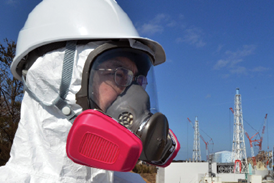


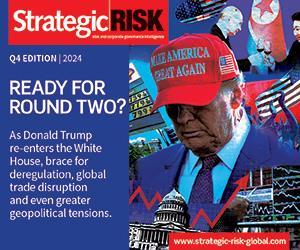


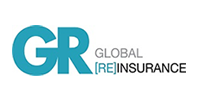
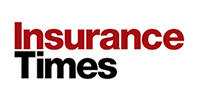
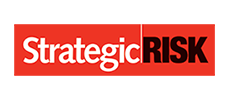
1 Readers' comment